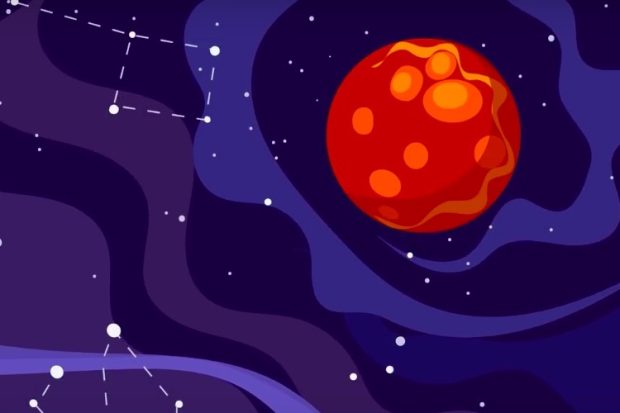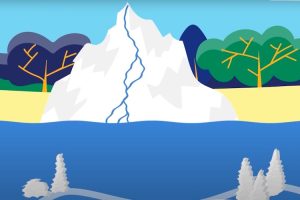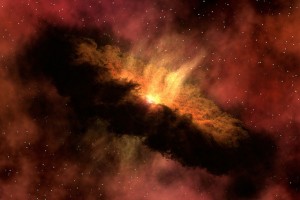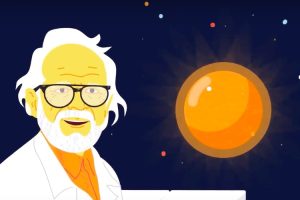The stagnation of the glacial Arctic Ocean
The new research suggests that deep water layers may have played a role in ending the last glacial period in t...
What did Venus look like one hundred thousand years ago? How did volcanism form its surface? How can we explore the planet hidden by acid clouds? Director of research at LATMOS, Jean-Loup Bertaux, describes the picture of the planet we got from the latest space missions.
We set the stage to remind that Venus is a kind of sister planet to the Earth, about the same size, but it is nearer to the Sun. And since it is nearer to the Sun, it receives more solar flux and it is, in fact, hotter. Also it has a very thick atmosphere, and so the greenhouse effect is very large, and at the ground level the temperature is terrible – 470C. But we consider the ground, because there is a thick layer of clouds, and we know now that this layer, these clouds are composed of droplets of sulfuric acid. Small droplets, maybe two microns in diameter, and this sulfuric acid is there, because in the atmosphere of Venus you have a little bit of water vapour and maybe four times more sulfur dioxide, SO2. And when you combine water vapour and SO2, it makes sulfuric acid droplets – we know that.
But what we know also is that on Earth, for instance, in volcanoes on Earth you have plenty of sulfur dioxide coming out, and by the eye you can see it in many places of volcanic activity. In Italy you have a small volcano where you have fumaroles, and you see a yellow stuff which is sulfur, because SO2 can be decomposed into sulfur and something else. And it has also rather a strong smell irritating the lungs. So anyway, what we know is that there is plenty of sulfur dioxide in the atmosphere of Venus, and we know that on the Earth it is produced by volcanoes. So it is quite tempting to understand if also this SO2 on Venus is produced by volcanism.

But when we think about volcanism we have to think in time scale. We are absolutely sure already that there has been volcanism, very active volcanism, let’s say, six hundred million years ago. How do we know that? We know that because there was some space mission, one Russian space mission, Venera-15, and another space mission called ‘Magellan’, American, with radars, and they could look through the clouds and make very good maps, geological maps of the surface of Venus, and we see plenty of evidence of old volcanos. And so we are sure that, in fact, there was a major so-called ‘resurfacing event’, that is to say. At the time between 600 million and 800 million years, you had plenty of lava and magma going outside and covering many plains – we know that.
But this was six hundred million years ago. What about today? Quite recently, more recently, in fact, we have this Venus Express mission from the European Space Agency, which is orbiting around Venus and which has not really a high-res radar, but, in fact, you can look through the clouds in the near infrared. Because the surface is so hot, it will emit something which is almost visible, about the one micron, for instance, wavelengths. You can see it by the eye, but it’s almost that you can’t see it. A CCD could see it, for instance.
So somebody found – one scientist, Mrs Smrekar, for instance, they found that with the VIRTIS instrument – that some places at the surface of Venus had a kind of ‘emissivity’, that is to say, the quantity of light that you emit in the near infrared, which was much above the normal, and it was on an area that looked a bit volcanic. And so they say: “Well, this is a trace of volcanic activity within, let’s say, one hundred thousand years”. It may have been one hundred thousand years ago, and so the lava would flow and would not be altered for a very long time. And so, because it has this kind of a different colour, if you want, or different intensity in brightness, we think that there is some evidence that there was volcanism one hundred thousand years ago, which is already much nearer to the present.
But what we would like to know now is if this volcanism is active. I would say, now, last week, or next week, or two days ago, or a few months ago, or a few years ago. And, in fact, it’s technically very difficult to detect. The reason is that if you have a lava flow which comes out on a particular day, it will cool off very fast. You could see it, if you have the instrument looking there, because the light would be much higher in the thermal infrared.
Thermal infrared for Venus is, in fact, almost in the visible part. If it were lava, it would be almost in the visible, so you could see it.
But in fact, it cools down very fast. When I say ‘very fast’ it is within one day or two days, so you have really to catch the light at the right place at the right moment.
In fact, there is, at the present time, and we are in August 2014, a publication that shows that with Venus Express they have seen a place, with the camera of Venus Express called V.M.C. from Germany, Mr. Markiewicz. And, in fact, he found that at a certain place you had an excess of light, and a few weeks after that we re-flew above the same place and there were no more of this excess of light. So this might be a direct proof that there is some volcanism active now.
There were some other observations, which were interpreted, let’s say, twenty years ago, by saying that there was also volcanism present now. Professor Esposito at the University of Colorado was analyzing the Pioneer-Venus measurement. Pioneer-Venus was an orbiter also launched in 1978, which lasted for ten years. He could measure the sulfur dioxide above the clouds and he could measure the quantity. And he saw that the quantity of SO2 above the clouds declined very fast for one year, and then it was at a very low level. And he said, “oh, it is because, perhaps, there was some volcanic plume creating SO2, but also pushing the air from below. And because the air has plenty of SO2 and because SO2, as soon as it goes above the clouds, is destroyed by the Sun, if you have some pushing up, then you can see an extra amount of SO2 above the clouds, and then it would decrease.” So, it was controversial at that time: an “is he right? – is he not right?” controversy.
Still it is not clear at all from our observations only, if it is due to the volcanic activity – it could be also some kind of fluid mechanical phenomenon, some kind of atmospheric perturbation. We have similar perturbations on the Earth, for instance, you have heard of the El Nino perturbation, which is a cycle of several years. We could imagine that on Venus that is some kind of atmospheric perturbations, which change everything for eight years, or ten years, or fifteen years – we don’t know.
So if you ask me if there are volcanoes on Venus, I would say: “Yes, surely, there were volcanoes active six million years ago. Possibly they were active one hundred thousand years ago – we see that because of the colour of the surface.” And today there is some evidence, new evidence that it did, there was something hot which became cool very fast. But it is only one example and, certainly, it is an area of science, we have to devote a new space mission to explore Venus. I think this is a fascinating planet. I would like to add that this planet is a kind of also a prototype for extrasolar planets. When we are going to look for extrasolar planets, we could find planets which are not far from the Sun, of the size of the Earth, and this is Venus. So being like the planet Earth does not mean that you can support life.

The new research suggests that deep water layers may have played a role in ending the last glacial period in t...

Astronomer Hauyu Baobab Liu on luminous stars, accretion of molecular gas, and the evolution of planetary syst...

Two research groups of astronomers on discovering a rare planet, the celestial body Kepler-432b and “red giant...